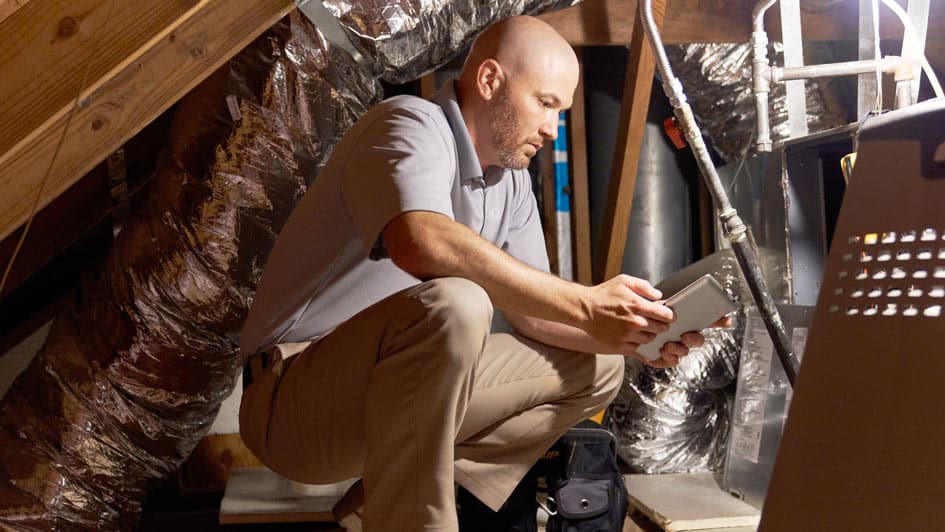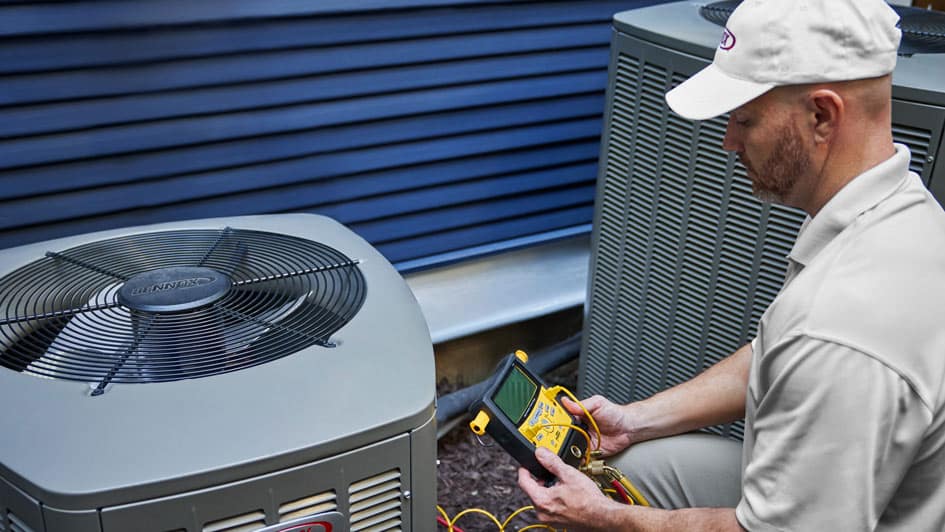
What New Furnace Efficiency Standards Mean for You in 2023
Did you know more than half of your home’s energy costs are related to heating and cooling? That is the reason why it’s essential to have an energy-efficient HVAC system.
Furnace efficiency standards were last modified to 80 AFUE in 2015. AFUE, or annualized fuel utilization efficiency, measures how effective your furnace is at transforming natural gas into heat. An 80 AFUE rating means your furnace will lose about 20% of the fuel it uses while creating heat.
In 2022, the U.S. government proposed new energy-efficiency standards for residential gas furnaces that would substantially reduce emissions, save customers money and promote sustainability.
This proposal is projected to:
- Save Americans $1.9 billion annually.
- Cut down on carbon emissions by 373 million metric tons and methane emissions by 5.1 million tons over three decades, the equivalent of what 61 million homes emit each year.
Starting in 2029, the proposed rule would require all new gas furnaces to be 95 AFUE. This means furnaces would change nearly all the gas they use into heat.
With these facts in mind, you may be asking yourself “what happens to my existing furnace”? As of this writing, not much, as the proposed rule will not go into effect until 2029 at the earliest and will not affect furnaces that are already in use.
But if you’re going to be needing furnace replacement in Abilene soon, highly energy-efficient furnaces are already available. See how these furnaces can save dollars each month off your energy bills.
Guide to Condensing Furnaces
How Condensing Furnaces Work
A condensing furnace is a style of heating system that uses a secondary heat exchanger to trap wasted heat from the furnace’s exhaust gases. This decreases the amount of energy wasted, enhances energy efficiency and lowers greenhouse gas emissions. It also requires less natural gas to generate the same rate of heat compared to other types of furnaces.
How Condensing Furnaces Differ from Non-Condensing Furnaces
The main difference between a condensing furnace and a non-condensing furnace is the condensing option’s use of a secondary heat exchanger to collect any wasted heat from its exhaust gases, while the latter does not.
Expected Longevity of a Condensing Furnace
The life span of a condensing furnace depends on the brand, model and other factors. Usually, a condensing furnace will last between 10-20 years with sufficient maintenance and regular service. If your heating system doesn’t have regular furnace maintenance, the equipment may struggle with performance and ultimately fail earlier than anticipated.
Why Condensing Furnaces Cost More
Oftentimes, condensing furnaces are more costly than non-condensing furnaces. This is the result of their increased efficiency and the additional components necessary to capture any wasted heat from its exhaust gases. The extra energy savings can often offset the cost of purchase, however, so ultimately, it may be worthwhile investing in a condensing furnace.
Guide to Variable-Speed Furnaces
Variable-Speed Furnaces: The What’s and How’s
A variable-speed furnace can change its fan speed subject to the heating needs of your [[location]] home. It performs at a slower speed until it senses a temperature decrease and then fires up to provide more heat. This type of system is significantly more efficient than conventional furnaces, as it only consumes the amount of energy required to heat your home, saving you money in the long run.
Many of the variable-speed furnaces are condensing furnaces, although a few are available in non-condensing models with lower AFUE ratings. To allow a furnace to be classified as a condensing furnace, it must be 90 AFUE or higher.
Do Variable-Speed Furnaces Run Constantly?
A variable-speed furnace doesn’t operate all the time. In fact, it runs at different speeds according to the temperature in your [[location]] home and the amount of energy it requires to sustain that temperature.
When too much energy is required to maintain your chosen temperature level, the furnace will shift up to a higher speed to manage that demand. Doing this will ensure more efficient heating and cooling in your home while also providing quieter operation.
Guide to Two-Stage Furnaces
Two-Stage Furnaces: What They Are and How They Work
A two-stage furnace is a type of heating system that utilizes two different stages of operation — low and high. In the low stage, the furnace operates at a reduced capacity in order to maintain a chosen temperature inside your home more efficiently. During the high stage, the furnace will run full throttle to meet demands for increased warmth or cooling. With a two-stage furnace, you can realize much better energy efficiency and uniform temperatures in all areas of your home.
While two-stage furnaces are extremely efficient, not all models are condensing furnaces.
Does a Two-Stage Furnace Function All the Time?
A two-stage furnace does not continuously run. In the low stage of operation, the furnace performs at diminished capacity in order to sustain a planned temperature more efficiently within your home. When additional warmth or cooling is needed, the furnace will change over to its high stage and run at full capacity. As such, two-stage furnaces are capable to help reduce energy costs as it is not operating continually.
Contrasting Two-Stage and Variable-Speed Furnaces
Two-stage furnaces have two stages of operation, low and high. During the low stage, the furnace runs at reduced capacity in order to maintain a desired temperature within your home. When more warmth or cooling is necessary, the furnace will switch to its high stage and operate at peak capacity.
Variable-speed furnaces can function at a variety of speeds in order to maintain a precise temperature within your home. Through this ability it can also help reduce energy costs as it is not constantly running on full power like many two-stage furnaces are required to do.
Differences Between One- and Two-Stage Furnaces
One-stage furnaces have a single stage of operation and operate either at full capacity or not at all. As a result, the furnace will run constantly in order to maintain a desired comfort level within your home.
Two-stage furnace, in comparison, have two stages of operation, low and high. Within the the low stage, the furnace runs at reduced capacity in order to maintain a desired temperature more efficiently within your home. When a greater demand for warmth or cooling is desired, the furnace will change over to its high stage and operate at peak capacity.
Schedule Your Furnace Installation with Abilene Air-Tech Inc Today
Modern furnace technology can be confusing. That’s why our Abilene Air-Tech Inc specialists are here to help with a complimentary, no-pressure estimate for furnace installation. We’ll assess your home, your heating requirements and your budget, and then we’ll help you find the right solution. Call us at (325) 692-5850 to get started today!
Don't wait until your AC breaks down - get a professional maintenance check now.
Contact


